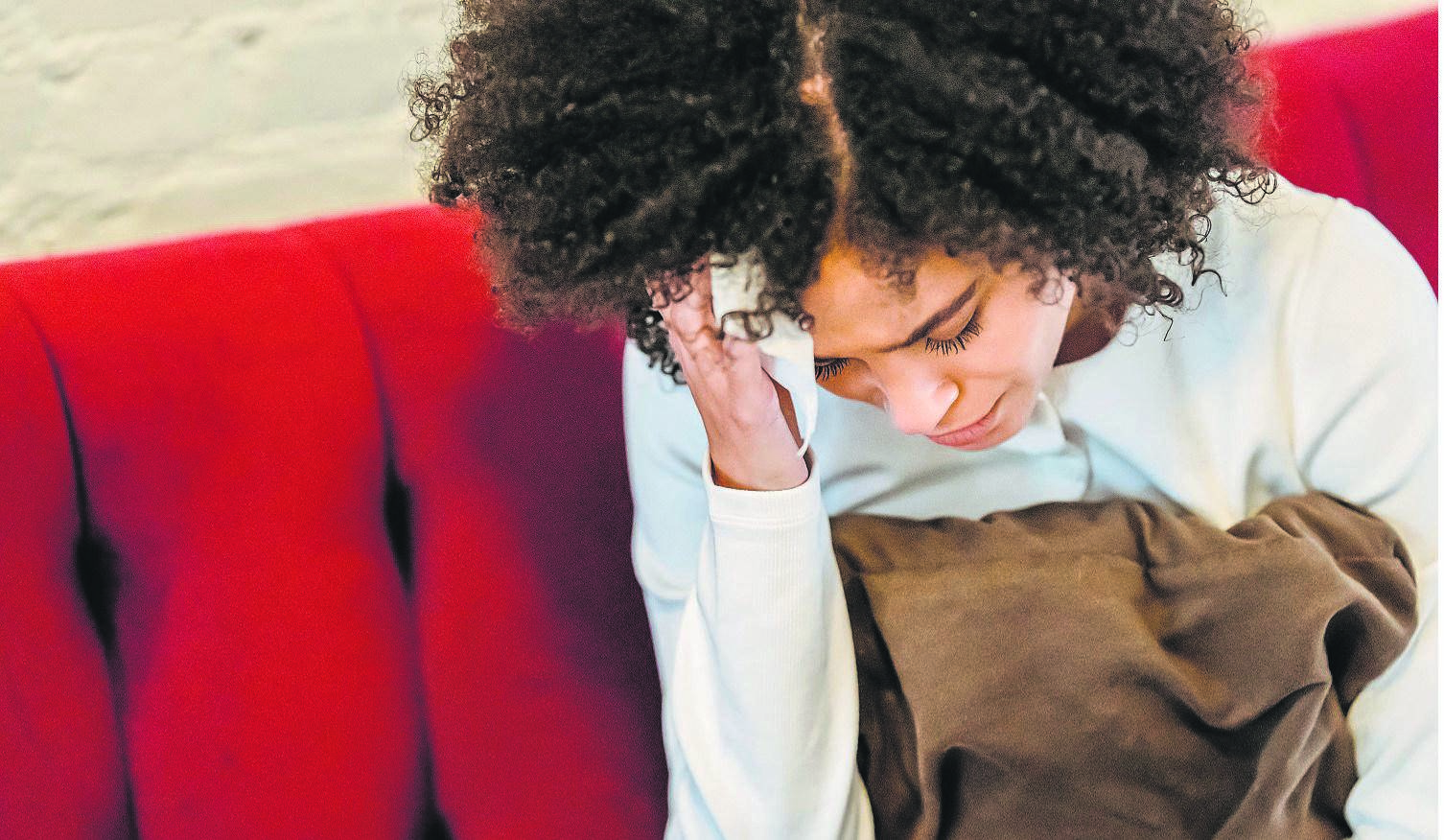
While Covid-19 cases are surging in South Africa, the flu virus has virtually vanished. Only 50 influenza cases have been detected so far this year through the country’s influenza monitoring system.
While Covid-19 cases are surging in South Africa, off the back of the dominant Delta variant, the flu virus has virtually vanished. Only 50 influenza cases have been detected so far this year through the influenza monitoring system. With very little flu circulating there were no deaths due to influenza identified so far this year, surveillance shows. This is a dramatic difference from pre-Covid times.
The influenza virus usually claims about 11 000 lives per year in South Africa, with about 40 000 people hospitalised. Initially, there were concerns that the effects of a “twindemic” – influenza coupled with Covid-19 – would overburden the health system, but the significant absence of flu cases over the past two years seems to have given a much-needed reprieve. The lack of exposure to the flu, however, could also make the population more susceptible to the virus when it returns, which it is more than likely to do.
The influenza season has not yet started
The National Institute for Communicable Diseases (NICD) says in its monthly respiratory pathogens surveillance report for June that only 50 cases of influenza have been detected so far and states that the influenza season has not yet started. The first influenza-positive case of 2021 was detected in the week ending on March 7 and since then only sporadic cases have been reported. Forty (80%) of the 50 cases were due to the influenza B/Victoria strain.
Dr Sibongile Walaza, a medical epidemiologist at the NICD’s Centre for Respiratory Diseases and Meningitis says that, because there was so little flu so far this year, “we were unable to do an analysis of influenza mortality”. She adds that, from surveillance data using samples from five sentinel sites, there were no flu-positive deaths.
Shabir Madhi, professor of vaccinology at the University of the Witwatersrand says what we are facing now is not unique to South Africa:
Imported from the northern hemisphere
He says the influenza virus is usually imported from the northern hemisphere and then starts circulating in South Africa. “Since March last year, when we went into level five restrictions and essentially closed the borders, the importation of the virus into the country was interrupted. Although some borders have been opened since then, mobility has been fairly limited. There has also been little influenza circulating in the northern hemisphere during the course of their winter season.”
In South Africa there is usually a pattern of influenza – a circulation starting around May/June – but it can subside and then come back around August. “It’s a bit early to say whether there won’t be any influenza for the rest of the year,” says Madhi.
Every year outside of the Covid-19 era, he says, about one in three people in South Africa were infected with influenza. However, very few of them developed severe illness because they acquired underlying immunity that protected them in the future against severe illness. Most have relatively mild infection, with symptoms such as fever, headache and a sore throat. The majority of those infected were completely asymptomatic.
However, Madhi says that, despite background population immunity, the influenza virus returns due to “genetic drift”, meaning continuing mutations of the virus where it is able to evade at least a component of the immune system. This allows it to be infectious but does not necessarily result in severe disease.
“So, it’s unpredictable whether flu might seed in the country,” he says. “If it does, we will face a situation where we will probably have waning of immunity from past infection because there was very little virus that circulated last year.”
Walaza says Sars-CoV-2 and the influenza viruses are thought to spread in similar ways, with the former being more contagious.
READ: ‘When will it end?’: How a changing virus is reshaping scientists’ views on Covid-19
Of the flu strains detected in South Africa, influenza A, particularly, and B are the most transmissible. Through the NICD influenza monitoring system, the influenza virus strains identified to date have been the usual seasonal influenza B strain, with the Victoria and Yamagata lineages, and influenza A with subtypes H3N2 and H1N1. Influenza A viruses are the only influenza viruses known to cause flu pandemics, meaning global epidemics of flu disease. These dominant strains have been circulating for decades, says Madhi.
The impact of restrictions and behaviour change
Measures such as mask-wearing, sanitising and physical distancing could play a role in staving off flu infections but, as Madhi points out, that would depend on whether there was flu actually circulating in the country. “So, in the absence of any flu, those sorts of interventions [will not] have relevance because there’s no flu to transmit,” he says.
Children of school-going age are important vectors of the transmission of influenza. Walaza and Madhi agree that, with the school closures last year and wearing of face masks, if there was influenza, these measures would significantly interrupt chains of transmission. There was not much influenza imported in the country for it to take hold and to circulate but, had it taken hold, then those sorts of interventions would have helped reduce the transmission of influenza as well.
“When you look at the seropositivity for Sars-CoV-2 infection, it clearly shows that there has been a huge amount of infection that’s taken place, last year and even now. So if adherence to those interventions was that good, we would not have had such a percentage of the population having been infected with Sars-CoV-2 to start off with,” says Madhi.
The role of flu vaccines
Walaza says that, apart from the flu vaccine procured by the private sector, the national department of health distributed 880 400 doses to provinces this year but added that the uptake “has not been so great”.
In the past, South Africa usually procured about 1.2 million doses of the flu vaccine and most often could not use all of them. Last year, 2 million doses were procured and flu vaccines were strongly recommended for people at high risk of influenza because of fears of a “twindemic of flu and Covid-19”.
As with Sars-CoV-2, the flu virus can change or mutate. This is called “antigenic drift”. These are small changes (or mutations) in the genes of influenza viruses that can lead to changes in the surface proteins of the virus.
New flu vaccines have to be made every year to reflect the mutations and different strains of the virus around the world, says Madhi. In South Africa, the trivalent (two A subtypes with one B lineage) and quadrivalent flu vaccines (two A subtypes and two B lineages) are used and depend on which one is procured.
“There is not much difference between the trivalent and quadrivalent vaccine in terms of the protection they confer,” says Madhi. “The pharmaceutical companies pursued a quadrivalent vaccine to include both lineages of the B strain – the Victoria and Yamagata – but including one of the two lineages in your vaccine provides cross-protection against the other lineage. All that it’s done is increase the cost of the vaccines, with probably very little public health benefit.”
He says the other big challenge for influenza vaccination right now is that the recommendation as to which strain to include in the vaccine is predictive rather than being an absolute science. The World Health Organisation makes predictions of what the construct should be for the southern hemisphere, using the strains that have been circulating in the northern hemisphere.
“That is not always highly successful. In some years there’s a complete mismatch between a dominant strain that’s circulating in the country and what’s actually included in the vaccine, so much so that there’s no vaccine effectiveness against influenza in some years,” says Madhi. “The bottom line is that, if you’re in a high-risk group, you need to take the vaccine. You might not benefit, as the flu virus might not be circulating but you probably would come short when the flu virus started circulating.”
READ: The burning question: to vax or not to vax?
Those at high risk of severe illness from influenza are children younger than five but especially children younger than two years old, adults 65 years of age and older and pregnant women (and women up to two weeks postpartum). People with co-morbidities are also at high risk of infection.
‘Extremely unusual pattern of circulation’ for RSV
Chest infections are common in children in winter and can be caused by either viral or bacterial pathogens. The respiratory syncytial virus (RSV) is the most common viral pathogen causing chest infections in children and can lead to pneumonia, requiring hospitalisation.
Madhi says there is continuing surveillance of pneumonia at Chris Hani Baragwanath Hospital in Soweto. Since 2006, researchers have been following a defined cohort of 120 000 children under the age of five (the annual birth cohort is about 30 000).
“We have used these data in the past to look at the impact of pneumococcal conjugate vaccine where we showed a reduction of 45% in all-cause pneumonia hospitalisation.”
Madhi explains that the incidence of all-cause hospitalisation of pneumonia in children stabilised between 2012 and 2019 and it was predictable how many cases would be admitted to hospital. “Now we have seen close to a 2.2-fold reduction in all-cause hospitalisation of pneumonia in children under the age of five.”
READ: In-depth: What South Africa’s power cuts mean for health facilities
RSV usually causes up to about 40% of all pneumonia hospitalisations in children. It usually starts circulating in Johannesburg in about March and continues to do so for two to three months. “It was about to start last year when we went into level 5 lockdown. And then it completely disappeared. It came back round about November and from then it continued circulating until the end of May, which was the longest period that RSV had circulated for in the past 25 years. So it was an extremely unusual pattern of circulation.”
He says it seems that RSV had already seeded in the country before the lockdown, unlike the flu, which was probably imported later. “The level 5 restrictions and reduced mobility probably brought about an interruption of RSV transmissions. But, when we started to open up again in September and October, RSV came back with a vengeance,” he says.
Women at greater risk of flu
Although the NICD report does not account for gender differences, Walaza says women are generally more affected by influenza. This could be due to women going to health facilities more often than men. Also, many women are carers and educators – primary school teachers – and are therefore more exposed to possible infection. There is also evidence that the immune response to infection is different between males and females.
Madhi adds that, in the age group of 18 to 45, pregnant women are the biggest risk group for developing severe influenza illness, which is why they are prioritised for vaccination.
He says some studies have suggested that a flu vaccine can lower the risk of developing Covid-19. “We showed a 45% lower risk of Covid-19 in healthcare workers who had received a flu vaccine but, when we adjusted for co-variance or possible confounders, that didn’t turn out to be significant,” he says.
Baleta is an independent science journalist, WHO vaccine safety communications adviser and Internews pandemic mentor.
This article was produced by Spotlight – health journalism in the public interest




 Publications
Publications
 Partners
Partners









